This post describes the background and context of one image, a photo of a fire spinner taken at the Newport Big Splash Festival, October 2010. It’s representative of the best that I’ve shot this year and I want to look at how the photo came to be taken and why it works.
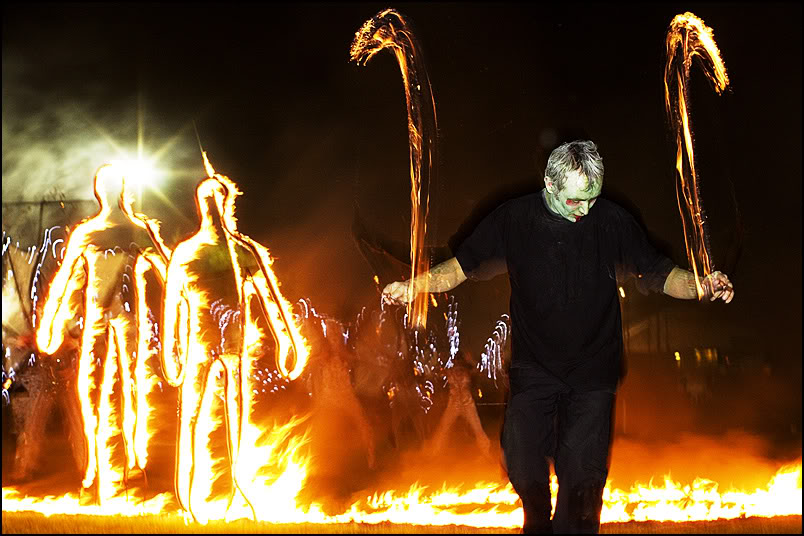
Over the past year and a half I’ve been shooting circus performers in south Wales – primarily poi spinners. Poi spinning originates in a Maori tradition from New Zealand, but in the transition to contemporary circus it has been updated to include LED glow lights as well as fire.
The image incorporates compositional elements that I find interesting, and which have been important to me for a long time. One aspect is the theatrical stage setting, another is the use of an expressive figure. I worked in figurative and abstract sculpture for some years and generally want to explore similar themes in my photographic work.
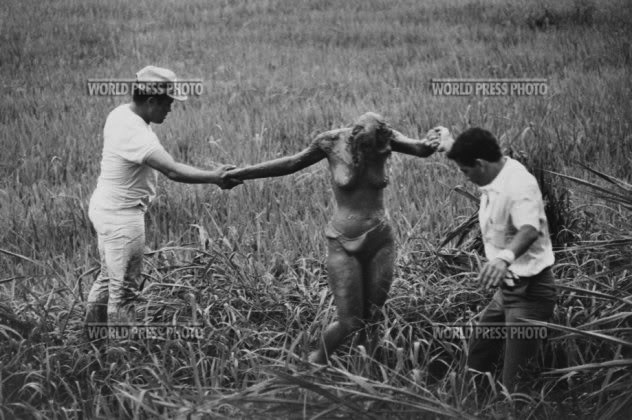
When sculpting I’d quite often use news photos as source material. This shot by Felipe Caicedo Chacon is a news photo from November 1985 showing one of the survivors of a volcanic eruption that left 20,000 people dead from a mudslide in Armero, Columbia.
At that time, 25 years ago now, I did a series of sketches based on the shot that I’d seen in a magazine.
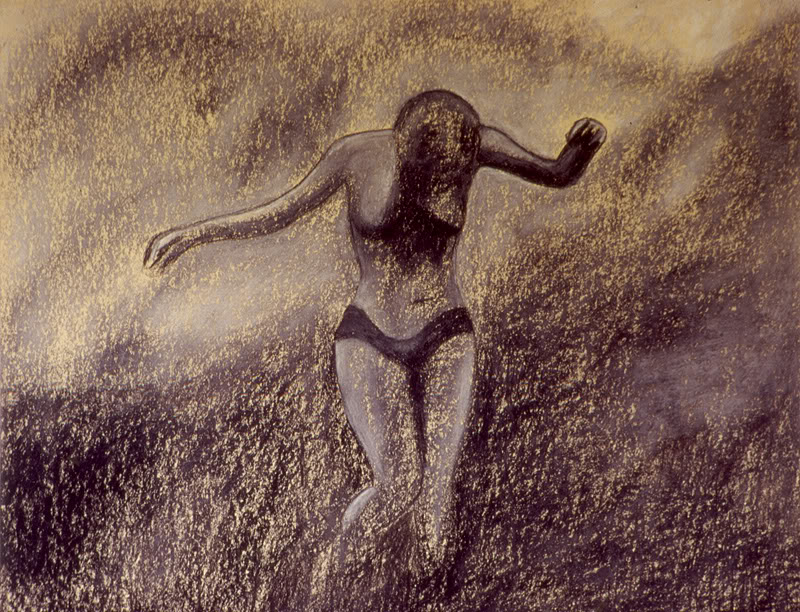
I used images like this because the figure has more depth than a straightforward art pose. It could be described as just a body in motion and therefore appropriate material to work with, but for me photojournalism carries a lot more weight than fine art. The human figure describing lines in space can be very moving, creating a narrative of emotion.
Eighteen months ago in July 2009, I was wandering around Llandovery in west Wales when I heard drums. I used to go to drumming workshops so the sound is an instant call signal for me. When I got to the source of the music I found a group of street performers.
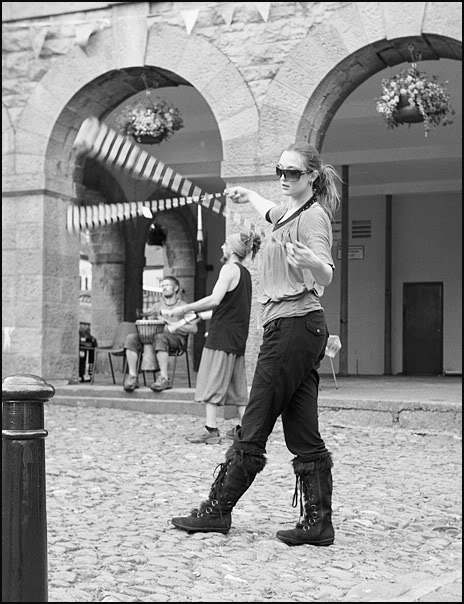
I was intrigued by the creative possibilities of this kind of performance because of the continuous movement of the artists. It was musical and rhythmic rather than static or posed. I got talking to Sian Brown about the bigSMALLevents group she had founded and she invited me to photograph two other events that summer.
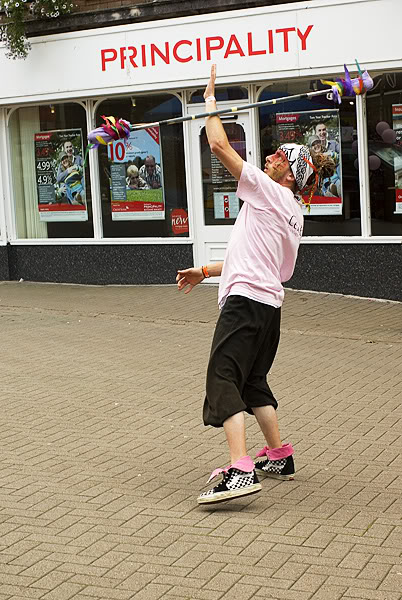
There’s obviously a huge difference between shooting daylight figures and fire at night. The backdrop is important because it creates a stage setting while controlled lighting can emphasize the balletic qualities of the performer.

The silhouette is one way of achieving this, at least, if you have an appropriate sky. Or you can use the lighting provided by both the fire poi and the on-camera flash.
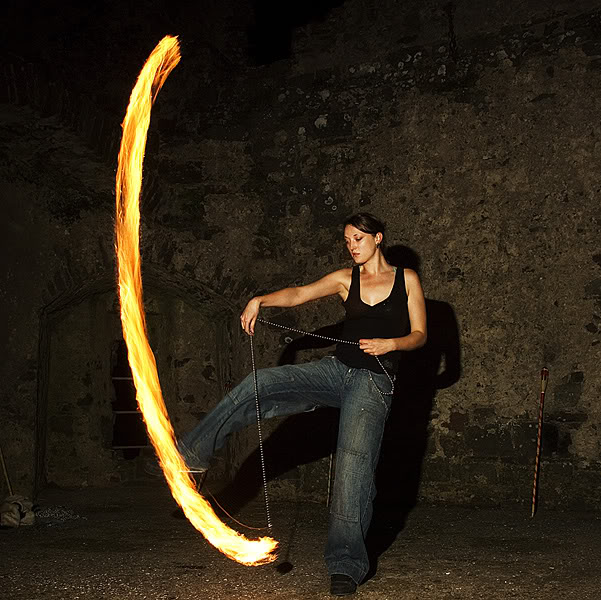
You’ll note that a slow shutter speed captures the trail of flame while the performer is illuminated by flash. You can also see that the chain is captured at the head of the trail by using rear, or second curtain flash sync.
The next three shots are all from one event, Hay-on-Fire, in October, 2009.
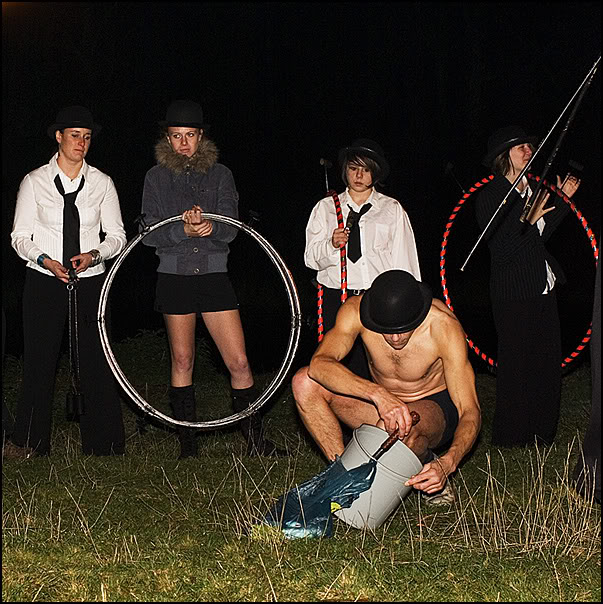
Working closely with Nic Hemsley of Organised Kaos in Pontardawe meant I could track an entire show from preparation to closure.
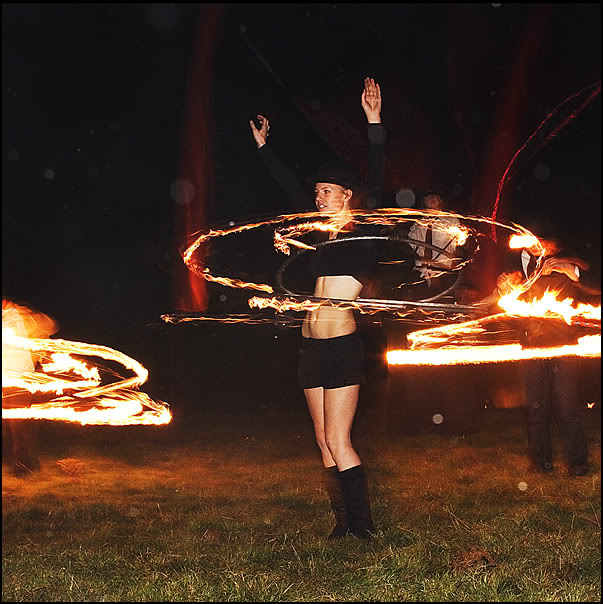
I was able to concentrate on shooting individual performers but at the same time I wanted to ensure that I could fit them into their setting. This has always been my practice in shooting street musicians since the spot where they choose to perform becomes their stage.
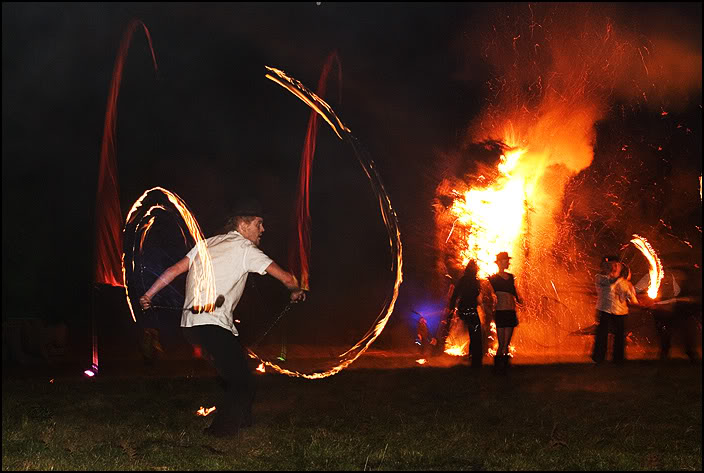
There are several things going on at once in this shot. Between the banners on the left, the main subject is working his triple poi to the end, as in a moment he’ll run out of paraffin. In the distance, two performers, one of them half naked, are nonchalantly watching another poi spinner as they stand in front of a towering burning man. It’s as bizarre as it’s dramatic.
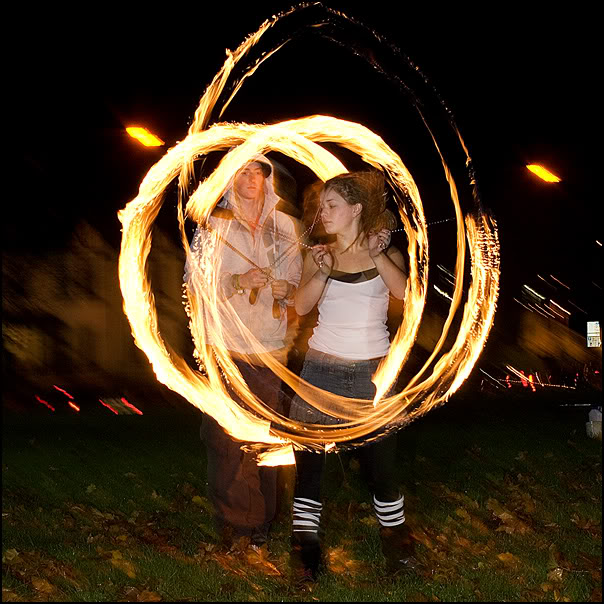
It’s also interesting to work with pairs of performers who have perfected a duet routine. These were shot in Carmarthen, and working in a city centre created a particular challenge with the bright neon lights in the background. I have another shot where there is a huge, blue neon advertisement for MFI in the background – a serious distraction from the poise of the spinners!
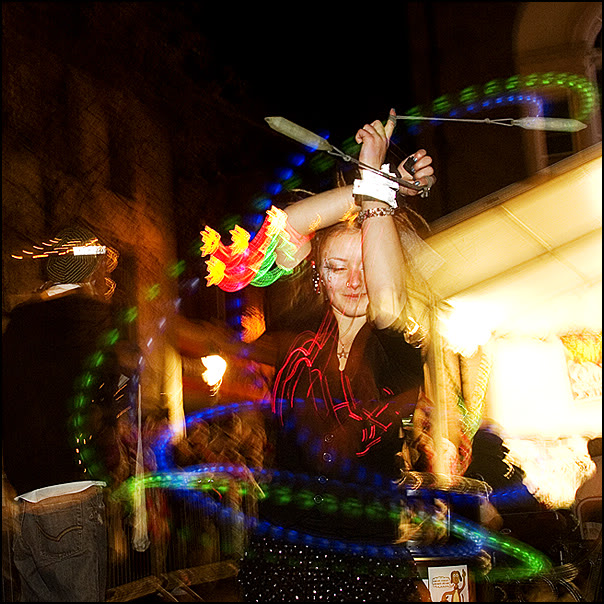
Sometimes the backdrop could complement the performer.

Or it could completely upstage them.
I use flash a great deal in conjunction with a slow shutter speed. I’ve tried various combinations of hand-held flash, but in the end having the flash gun mounted straight on the camera hotshoe works perfectly well and saves a lot of grief with connections, especially on cold winter nights.
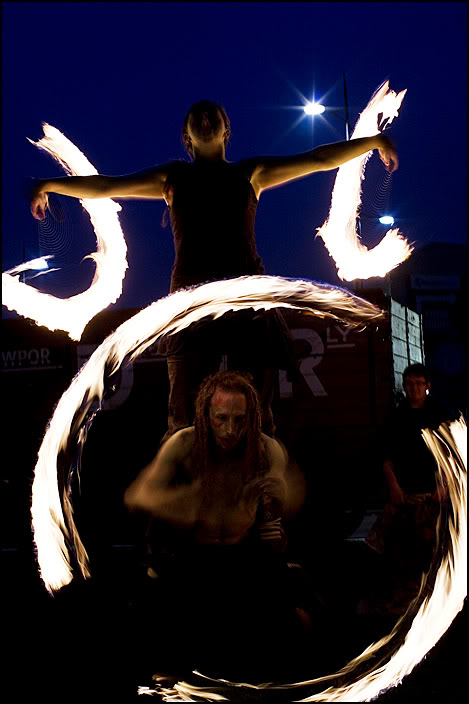
With good background lighting flash may not be appropriate. In this shot there was still plenty of light in the evening sky and the light of the poi themselves was enough to illuminate the spinners with the slow shutter speed.
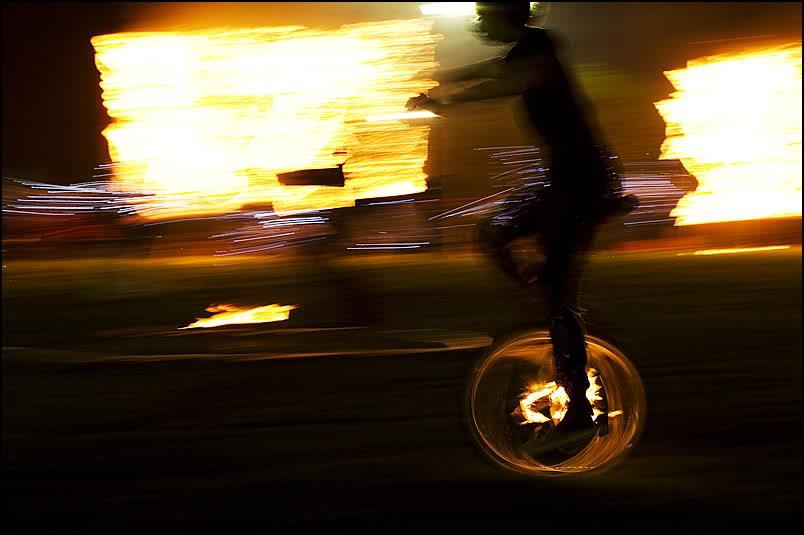
Other times, the lack of flash may be purely fortuitous, as in this image when I took a panning shot before the flash had recharged.
Public performances of this kind are chaotic and quite often, since these are in open areas rather than a theatre, there may be a number of changes to the running order between rehearsal and performance. It’s never going to be like a scripted TV shoot. Quite often you won’t know what’s going to happen next or what sort of photo opportunities there will be.
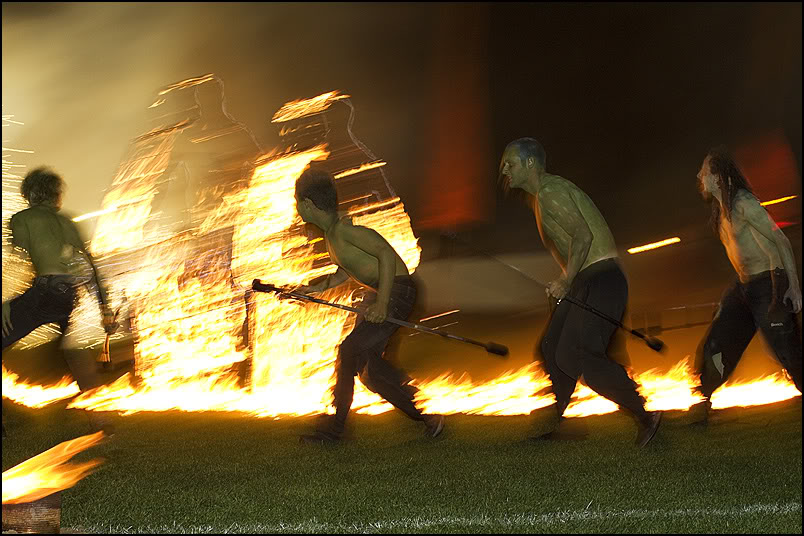
Shots like these don’t represent what the audience sees. The spectators are usually too far away to see the details, but also the spectator doesn’t have the advantage of slow motion vision.
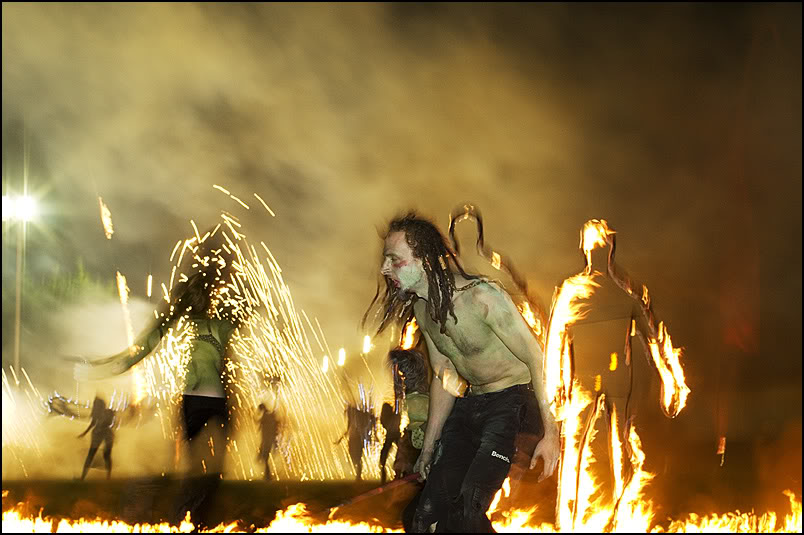
Right up close, the photographer is seeing the action from the inside and can create their own micro version of the stage show.
Even when you get to know one performer well, catching the right moves in the right way contains an element of luck and sometimes the rate of wastage is high. They move fast and you’re watching a trail of light. You might see where the movement starts but you cannot know for sure where it will end one fifth of a second later.
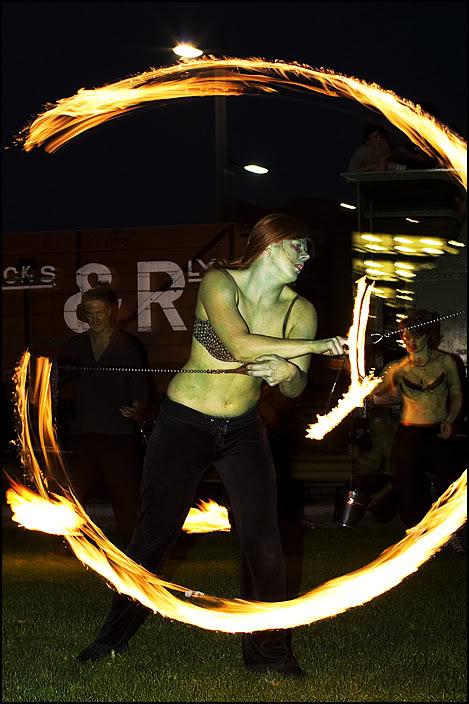
The subject might even end up half out of the frame, or another performer may have stepped in where you weren’t expecting them. I have no qualms about cropping as necessary to create a balanced image.
For me personally, the right shot incorporates several elements together. Ideally, the face of the fire spinner should be clearly visible, and holding a positive expression. It also helps if clothing and makeup are appropriate. As much as circus jugglers these performers are also actors.
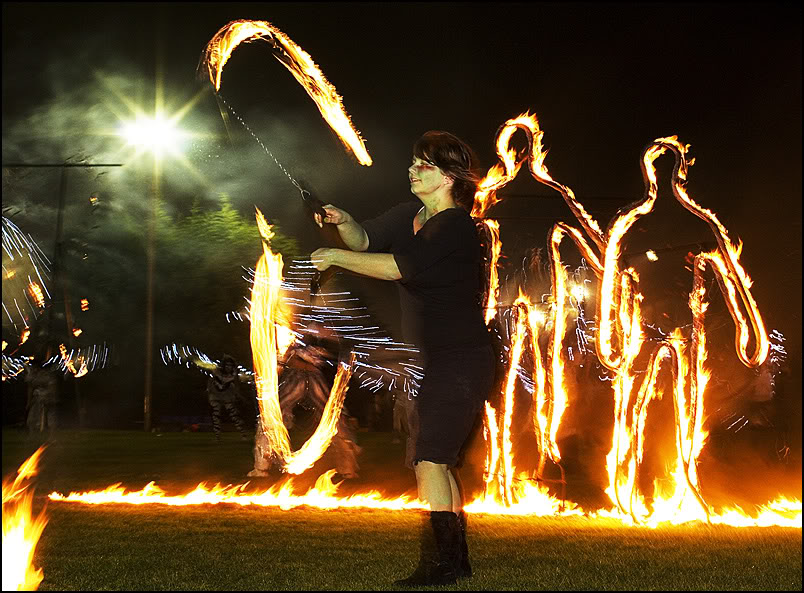
Focus should be sharp and the exposure should be good, without too much adjustment to Curves as you don’t want to introduce noise into the file. Though some Curves adjustment may be necessary if there is a lot of smoky haze in the air.
The position of the subject relative to the background is crucial, and the background itself has to support the subject, either as complement or contrast to the main action.

Finally, the pose of the subject has to be meaningful to the viewer in some way or other. It must communicate through its own physical presence and work as an element of the overall composition.
First published 2010/11/01